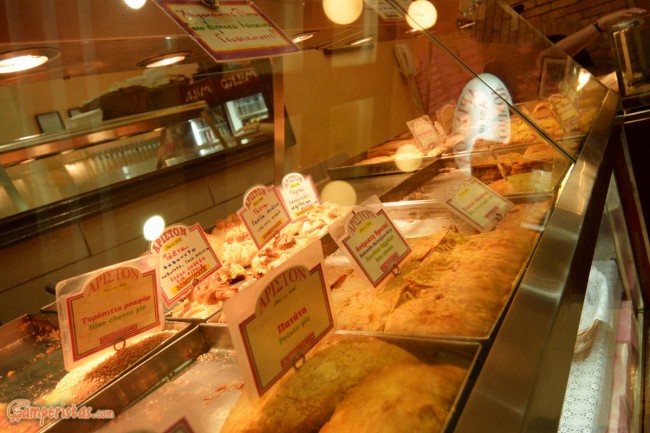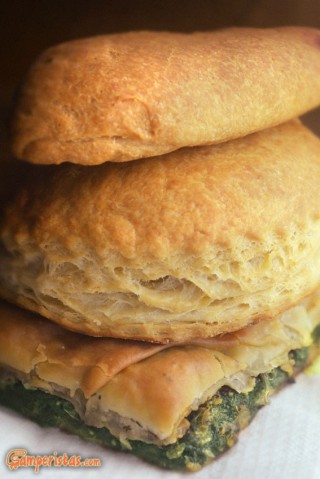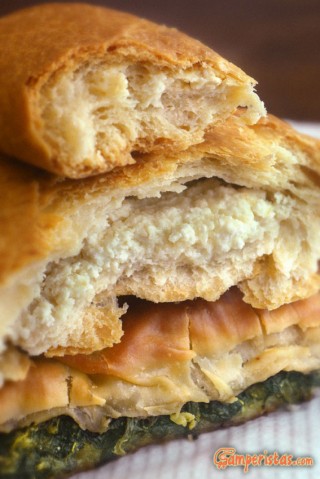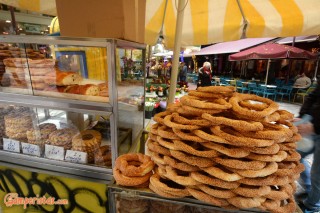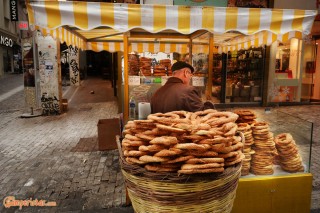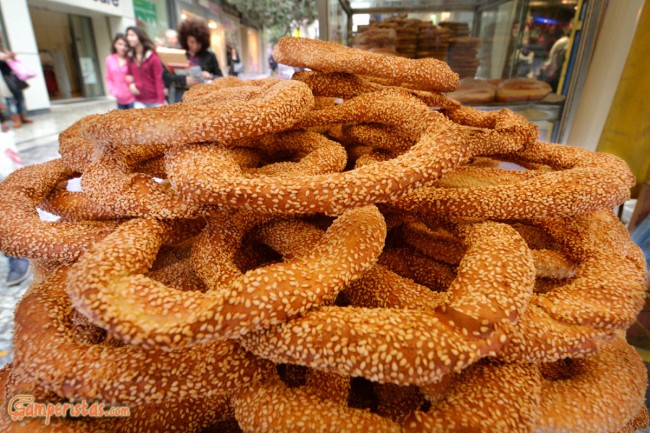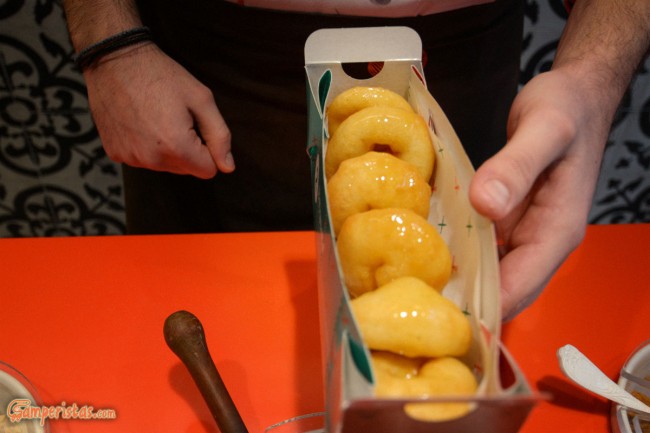
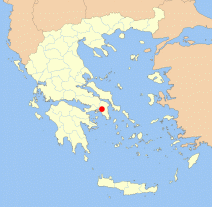 Tiropites, koulouria, loukoumades … Walking around the streets of Athens it’s hard not to notice the countless shops, bakeries, cafes, bars, plus street vendors selling tempting foodstuffs. As appealing as they may be, the fact that they are so many and various and that it’s not easy to identify the ingredients, it may discourage the less experienced, especially the vegetarians… It would be such a pity not to taste some!
Tiropites, koulouria, loukoumades … Walking around the streets of Athens it’s hard not to notice the countless shops, bakeries, cafes, bars, plus street vendors selling tempting foodstuffs. As appealing as they may be, the fact that they are so many and various and that it’s not easy to identify the ingredients, it may discourage the less experienced, especially the vegetarians… It would be such a pity not to taste some!
[sam id=”7″]
Being vegetarian myself, I know how it feels to see delicious snacks with unknown name and ingredients on display in countries where I cannot communicate with the vendors or trust them; I end up avoiding them, although I’m sure that I miss much of the enjoyment that travel life has to offer. I admit that in most cases I stick to fruits, vegetables and packaged food where ingredients are listed. I am often amazed (apart at how many ‘innocent’ comestibles are seem to have been cooked up in chemical labs) at the presence of meat-derived ingredients even in sweets!
The good news for vegetarians is that in Greece they don’t use lard for cooking nor in dough, so you only have the filling to worry about!
Tiropites & Co.
The “pites” (or “pita” in singular form ) can be considered the most common Greek snack. Pita means pie, made by baked dough and filled with various ingredients, mostly cheese and vegetables although there are some sweet versions. They are available at almost every angle in the center of any Greek town; if you are in a village, you’ll find them at the bakery or even at super markets. The prices range from € 1 to € 2.50 depending on the filling and the size.
The various fillings are the chief differences but not the only. Let’s start with the different types of dough:
Let’s see now the most common type of fillings:
In more sophisticated versions, you may find pies with mushrooms (manitaròpita), zucchini (kolokithòpita), potatoes (patatòpita) etc.
There are also two outsiders, which means that they are less ordinary although it is not unusual to see them along with the ‘star’ pies: the Peinirlì, a kind of boat-shaped pizza of Turkish origins filled mainly with kaseri cheese and Piroshkì, the Russian version of the Italian panzerotto or the American doughnut with various fillings; there is a very interesting vegetarian version with potatoes.
Koulouri (bread ring)
The proper name is Koulouri Thessalonikis, as it was “branded” in Thessaloniki in the beginning of the 20th century brought from Istanbul; its origins can be traced back to the Byzantine era! It is simple (but delicious) bread in the shape of a ring covered with sesame. You can find it in any bakery of the country and in street vendors stalls everywhere in the center of Athens and Thessaloniki, from early morning until late afternoon.
In addition to the basic version, which costs 50/60 cents, there are variants with cheese, olives or even chocolate. Eaten hot from the oven is a pleasure!
Lοukοumàdes
This is the classic Greek dessert, a type of deep-fried doughnut made from yeast-risen dough served hot and covered with honey (the traditional recipe) or syrup or chocolate. It is the kid’s favorite sweet! The dough is traditionally made without eggs or butter, so they are also suitable for vegans! The prices range from € 3.00 – €3.50 per portion, usually more than ample.
[sam id=”7″]

